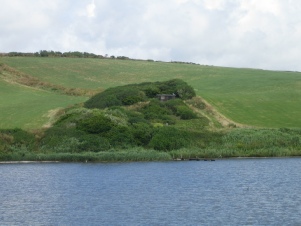



|
Geocaching |
Geocaching involves solving clues and using a GPS unit to find hidden caches. There are a number of caches along Chesil Beach and the Fleet. Visit the Geocaching website for information on current caches. |
|
Geograph |
The Geograph project aims to collect photographs from every square kilometre of the UK and Eire. There are many pictures of the Fleet and Chesil Beach. Visit the geograph website for more information. |
|
Geological Conservation Review (GCR) |
A review of important geological sites started in 1977 with the bulk of the work carried out in 1990. Later revisions are still continuing. There are eight GCR sites along Chesil Beach and the Fleet and these are listed on the JNCC website. |
|
Glasswort |
A plant from the genus salicornia that grows below the high tide line on the sandy/muddy area of the lower Fleet. When burnt the ashes contain soda ash, an important material in the manufacture of soda glass. |
|
Gore Cove SY615807 |
A small cove to the south of Herbury Gore. |

|
Hamm Beach SY668756 |
The eastern side of the strip of land connecting Portland to the mainland. It is included in the Chesil SAC designated area. Also has the track bed of the dismantled Portland railway running along its length. |
|
Hardy Way |
A 220 mile circular footpath around most of Dorset visiting places associated with the author Thomas Hardy. Part of the route is along the back of Chesil Beach north of Abbotsbury. Visit the Hardy Way website for more information, |
|
Herbury Gore SY613809 |
A spit of land projecting into the mid Fleet. Used as a rifle range by troops preparing for the D- |
|
Hive or hythe |
Old English word for a landing stage or landing place |
|
Holywell spring SY590826 |
A small spring and stream entering the Upper Fleet |
|
Hurricane aircraft |
A MK I hurricane crashed into the Mid- |

|
Ilchester Estates |
The bed of the Fleet and Chesil Beach adjacent to the Mid and Upper Fleet is owned by the Ilchester Estates. The Estates are based at Melbury House north of Dorchester. |
|
Interceptor drain |
Part of the Chiswell flood defence scheme. |


